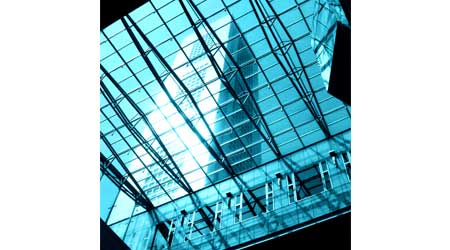Using Daylighting to Maximum Effect
First of a 3-part article on how to implement a thoughtful daylighting controls strategy
Though the benefits of daylight in buildings are well-documented, not all daylighting is beneficial. Good daylighting can provide energy savings, better occupant satisfaction, and even improved student focus and test scores in schools. However, bad daylighting — glare, heat gain, poor dimming of electric lights — can result in decreased productivity, complaints, and headaches, both figurative and literal. That’s why a thoughtful daylighting controls strategy is necessary: to ensure that the natural light entering a building is used to maximum effect.
“Daylighting controls and daylight harvesting are relatively simple,” says James Benya, principal and partner of Benya Burnett Consultancy. “The idea is that natural light has a number of great qualities. Aside from the fact that it’s a component of wellness, natural light is free.”
The starting point to any daylighting controls strategy is to understand how natural light enters a building. If you’re in a “city canyon” — on the second floor of a high-rise located smack dab in the middle of Manhattan, for instance — chances are your situation isn’t super conducive to daylighting, no matter how many dollars you throw at a fancy controls strategy. But in a lot of other cases, understanding where and when daylight can affect occupants and energy use is the key to planning controls. What it often comes down to is that good daylighting is a result of good architecture, whereas good daylighting controls are a result of good facility management.
“There’s a difference between daylight and sunlight,” says Denise Fong, principal, Stantec. “You want diffuse daylight, but you don’t want direct sunlight. Once you’ve designed for that, you can figure out how to control electric light to balance with daylight.”
Internal or external solar shades, louvers, electrochromic glass, or any number of other physical strategies can help control glare and solar heat gain, if either are problems. And these measures can also be incorporated into the basic daylighting controls strategy.
“The basic premise behind daylighting control is that you dim electric lights in response to available daylight,” says Kera Lagios, a daylighting specialist with Integral Group.
“The more this can be done as a background element people don’t notice, the more successful it’ll be,” says Fong, who manages the lighting design group at Stantec. As more facilities are using LEDs, it’s becoming easier to dim gradually so that occupants can’t tell anything’s different, she says. “Dimming can happen more gradually, over a 15-minute period, so people don’t notice, aren’t disturbed, and don’t try to disable the system,” she says.
Daylighting controls systems function differently depending on the type of photosensor the system uses. An open-loop system is a simple, flexible system that includes a photocell that measures the amount of available daylight coming into a space, and dims the electric lights in proportion. This type of system may work best with a skylight or tubular daylighting device (TDD) because the light level that is coming in is nearly always the same, Benya says. “Windows create entirely different light conditions,” he says. And in these cases, which represent the majority of daylighting situations, a closed-loop system may be best. In a closed-loop system, a photocell measures the sum of electric and natural light, and then dims the lights based on set protocols. “In this case, users have the ability to more finely tune and adjust light levels,”says Lagios.
New technology is providing new options for daylighting controls, as well. “Another interesting development is new photosensor technology that combines open- and closed-loop sensing, which promises increased reliability,” says Craig DiLouie, education director with the Lighting Controls Association. The dual-loop system provides the best of both worlds, says Benya. The system can recalibrate itself continually to make sure that dimming or switching is always as intended and light levels are always as specified for a particular space. This dramatically improves the consistency of light in the space and can offer energy savings compared with either open- or closed-loop systems by themselves.
Related Topics:














